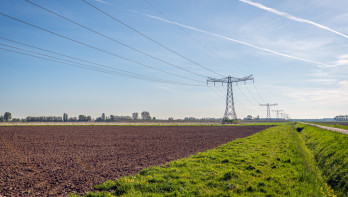Analysis Energy
Electricity price remains high due to disconnections
The gas price decreased significantly this week, while electricity remained expensive. The gas price dropped after it was announced that a serious disruption to a Norwegian-British pipeline was quickly resolved. Additionally, due to disconnection from the power grid, a fifth of all generated solar and wind energy was lost.
The gas price took a substantial step down last week. On Monday, June 3, gas was traded at €36.02. After that, the gas price decreased almost constantly to €32.69.
The gas price declined after a disruption to the Norwegian supply to the UK was relatively quickly resolved. This led to an upward spiral, as prices in the Asian LNG market also increased. These higher prices also raised the costs of LNG for European countries, giving the price even more momentum.
Although the situation is now stable, the strong market reaction may not have helped. It demonstrates how dependent the European Union still is on the Norwegian market and how relatively small incidents can derail the market. The latest available data on the share of Norwegian gas in European imports dates back to 2022 and stands at 26%. While data for 2023 is not yet known, the dependency has further increased.
Supply remains suboptimal
Not all issues with the Norwegian gas network have been resolved. Over the weekend, the Norwegian gas company Equinor reported several minor disruptions at the Visund field. This has resulted in lower additional gas production. The total volume exported by Norway to the EU and UK increased from 256 million to 264 million cubic meters, an increase of 8 million cubic meters. This is a relatively low volume, considering that after fixing the pipeline disruption to the UK, 22 million cubic meters became available. In total, Norway should export around 300 million cubic meters of gas to the European market.
Share of renewable energy in practice 20% lower
Meanwhile, the electricity price roughly followed the same pattern as last week, avoiding extreme highs and lows. The price was generally on the high side. On Tuesday, June 5, electricity was traded at €73.25 per megawatt-hour. During the weekdays, the price remained high, but it dropped significantly over the weekend, reaching €24.93 on Sunday. On Monday, June 10, the electricity price reached the highest level of the week at €90.73.
In general, revenues from renewable sources decreased. This is mainly due to lower wind power. The capacity of solar power was 36.9% higher than the previous week. However, only 22.9% of the electricity was generated by wind turbines. In total, the percentage of renewable electricity was 59.8%.
Although this percentage seems quite high, it is actually quite deceptive in practice. The generation of renewable energy was quite uneven this week, resulting in the amount of electricity generated on paper being greater than in reality. This is mainly due to very significant peaks in solar energy generation, while wind energy barely provided a baseline. Unfortunately, strong winds coincided with the peak solar power moments. As a result, there were significant disconnections and substantial efficiency losses. Due to disconnections, the percentage of 'free' renewable electricity is about 10-20% lower, as stated on the X-channel by Martien Visser of the Dutch Gasunie. This explains why prices remained high despite the theoretically high share of renewable energy.




